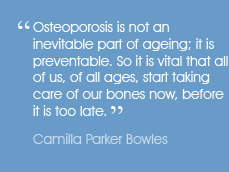
 |
 |
 |
|
| 7th December 2025 | ||
 |
Depression and Osteoporosis“PROFOX” - The post HRT nightmareThe imaginary hybrid drug PROFOX is an anxious prediction of a therapeutic disaster for post menopausal women who need treatment for low bone density, depression , pelvic atrophy and vasomotor symptoms but are denied estrogens. Physicians and psychiatrists have been slow to accept the clear benefits of estrogen therapy in the treatment of osteoporosis and depression. Is it an honest fear of side effects, ignorance of hormone therapy, misinterpretation of the data or simply a territorial hold on the condition which then condemns women to sub optimal therapy? Although estrogens have been proven to prevent fractures in a mixed risk population and that the benefits on bone density and histology are dose dependant it has been relegated to a treatment to be used if others fail or if the woman has severe menopausal symptoms. This protection from estrogens effects not only the skeleton but also the intervertebral discs which make up one quarter of the length of the spinal column. This latter benefit is not produced by bisphosphanates. This failure of physicians to familiarise themselves with estrogen therapy has, in their minds, been justified by the results of the WHI study and by the regulatory bodies who have advised that estrogen should not be first choice therapy for osteoporosis. But in reality the physicians objections to estrogen therapy antedated the WHI study by many years. Specialists are a product of their training which for non gynaecologists does not include the subtleties of the use , the dose and route of various estrogens , gestogens and occasionally androgens. Updated information and interpretation of the WHI study indicates that HRT, particularly estrogen alone, is both safe and protective in the younger postmenopausal woman below the age of 60. Such therapy is associated with fewer fractures , less colon cancer , fewer heart attacks , possibly less breast cancer and certainly fewer deaths. It should, in the minds of many workers, be first line therapy in this situation. However, Fosamax Once Weekly is an inexpensive alternative recommended by NICE as first line therapy and preferred by physicians. It produces lesser skeletal and systemic benefit than estrogens but it does not confuse the medical attendant with hormonal side effects such as bleeding, mastalgia and occasional PMS symptoms. These are problems that can be dealt with by any competent general practitioner but have not been learned by specialist bone physicians and rheumatologists who also seem to be complacent about considerable long term side effects of bisphosphanates. A similar ‘turf war’ occurs with the commonplace depression in perimenopausal women. These women with estrogen responsive depression often have a history of postnatal depression and premenstrual depression which have all been shown to be effectively treated by transdermal estrogens in good controlled trials in the most prestigious journals . It is therefore surprising that none of these studies have been repeated by those mostly responsible for the treatment of depression in women. This neglect is either due to the unlikely belief that these studies are perfect or because psychiatrists and the pharmaceutical industry do not want to show the benefits or even the superiority of estrogens. For example there is only one placebo controlled study demonstrating that transdermal estrogens are effective in treating severe premenstrual depression by suppressing ovulation but there are now 50 similar studies showing that SSRIs are useful. Why should the industry fund studies that reveal that their high profit in patent drug is less effective than the much less profitable estrogens? Psychiatrists almost invariably refuse to accept these data relying upon psycho therapy , SSRI’s and even ECT particularly in the private sector. Once again it is to the disadvantage of the women that psychiatrists have not chosen to become aware of this modality of treatment. It is commonplace to see women with perimenopausal depression who have been taking many mood stabilizing drugs for many years .They claim to have been last well during their last pregnancy after which they started or recommenced antidepressants for post natal depression , later pre menstrual depression and climacteric depression. It is difficult to obtain precise data but antidepressants are now used by about 30% percent of women in the UK and there is even a move to use this drug for the treatment of vasomotor symptoms. It is barely effective but it is becoming a new indication for SSRI therapy. The nightmare for the future is that postmenopausal women with hot flushes, depression , sexual problems and low bone density, who need estrogens perhaps with testosterone, will be given a SSRI and bisphosphanate combination . PROFOX, a Frankenstein combination of PROzac and FOsamaX . As these two drugs are now available as cheap generics they are already being prescribed together. Unfortunately this warning of a single preparation is not a fanciful aberration as we already have close to the market a combination of a SERM for osteoporosis combined with oestrogens to prevent the symptoms of oestrogen deficiency. This was a joke comment at a British Menopause Society debate 10 years ago but has now become a reality. Unless the regulatory authorities consider the current safety data in the under 60s and modify their resistance to HRT the spectre of PROFOX will be upon us. It is a vision of the future which must be avoided. Professor John Studd |
|
| ^top |